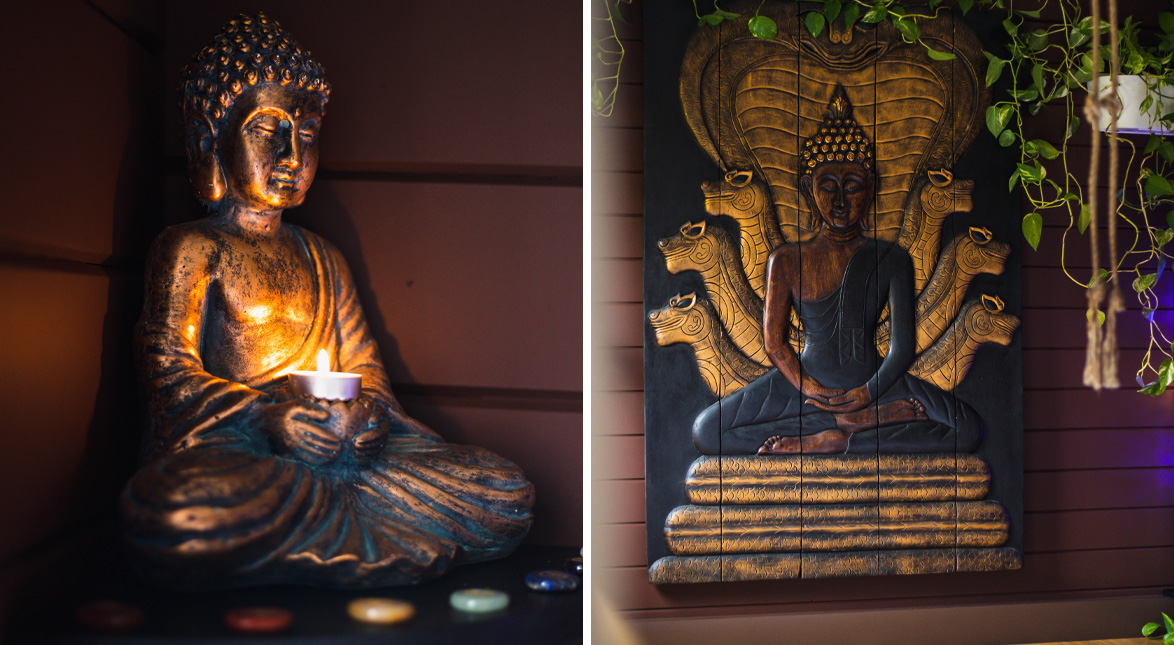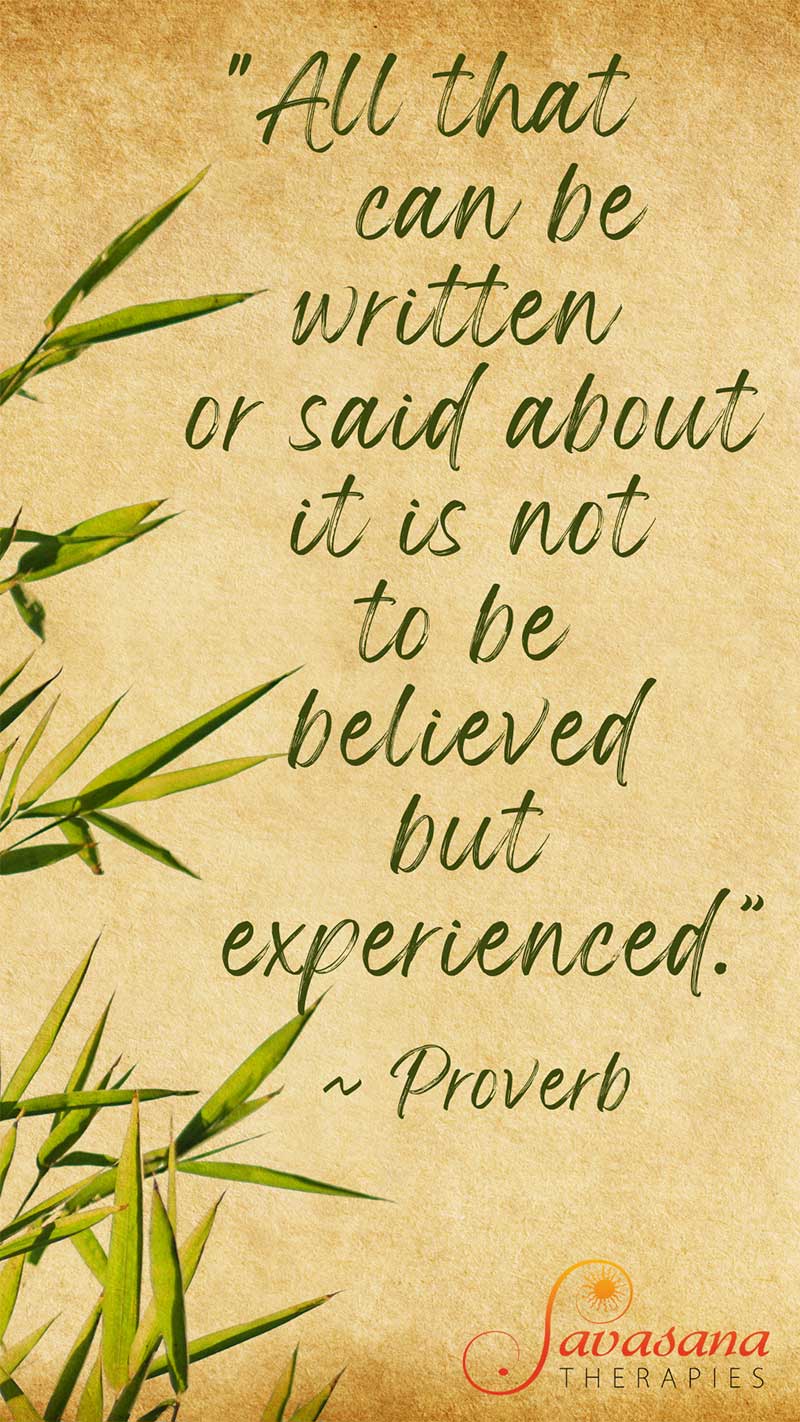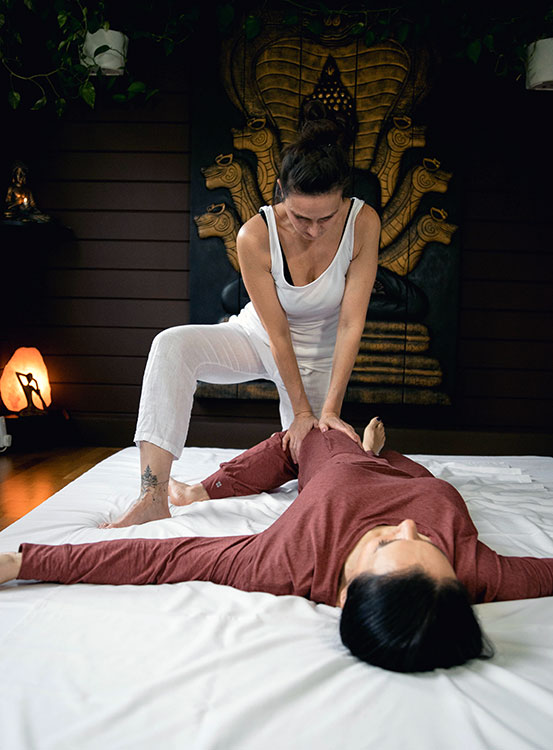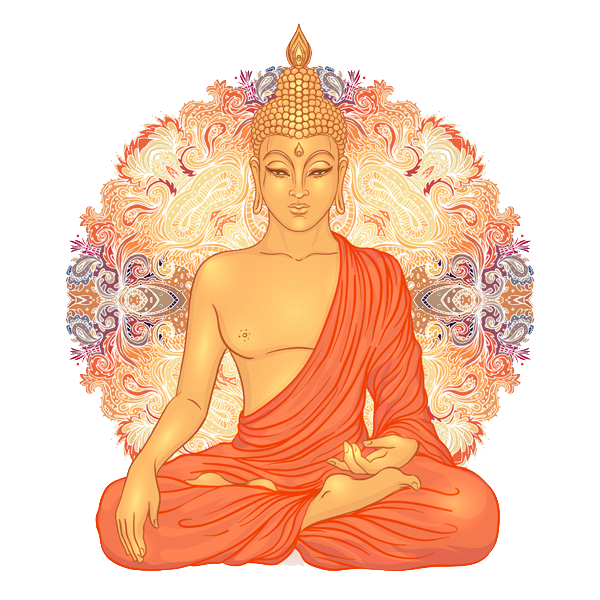

Savasana Therapies is comprised of holistic therapies such as Traditional Thai Massage and Chavutti Thirumal.
Savasana Therapies offers treatments from very mild relaxing Thai Oil Massage to very strong and invigorating Thai Yoga Massage. For those who would like to be properly pressed and smothered in oil, there is a Chavutti Thirumal therapy.
Throughout the years of giving Thai massage treatments, I have seen people resting at the end of their treatments in the Savasana pose and that made me think what actually my treatments are about…
…rest on your back, energy pulses through your limbs, your breath is slow… soften the root of the tongue, the wings of the nose, the channels of the inner ears, and the skin of the forehead. Let the eyes sink to the back of the head, then turn them downward to gaze at the heart… rest in savasana.
“Sava means corpse in Sanskrit, and Savasana is a preparation for a conscious death in which supreme consciousness that is everywhere and in everything is released,” says Suzie Hurley, Senior Certified Anusara Yoga teacher.
By emulating a corpse through conscious relaxation, one symbolically dies in order to be born anew. During Savasana we have the opportunity to relinquish our individual limitations in order to merge with a power greater than ourselves.
Hovering in the magical realm between sleep and wakefulness, you settle into Savasana, the Corpse Pose, and a gentle smile melts across your face.
I hope you will find your Profundity of Stillness in some of our treatments…

I am Jana Page and I do Traditional Thai Massage and Chavutti Thirumal in Tunbridge Wells. I love what I do and I am always seeking ways to improve myself in these techniques and beyond in professional and personal life.
I first learnt Traditional Thai Massage at the Osho Meditation Centre, Czech Republic, in 1998. Since then, I have attended courses around Europe, and learnt from teachers such as Nicholas Barrett, Itzhak Helman, Simon Pier Gall, Kira Balaskas, Helen Noakes, Candida Valentino, and Dave Hoyle, and this list is not finished yet.
Find out more on Instagram. I am trying to be up-to-date 🙂

Watch our videos:

Savasana Therapies is comprised of holistic therapies such as Traditional Thai Massage and Chavutti Thirumal.
Savasana Therapies offers treatments from very mild relaxing Thai Oil Massage to very strong and invigorating Thai Yoga Massage. For those who would like to be properly pressed and smothered in oil, there is a Chavutti Thirumal therapy.
Throughout the years of giving Thai massage treatments, I have seen people resting at the end of their treatments in the Savasana pose and that made me think what actually my treatments are about…
…rest on your back, energy pulses through your limbs, your breath is slow… soften the root of the tongue, the wings of the nose, the channels of the inner ears, and the skin of the forehead. Let the eyes sink to the back of the head, then turn them downward to gaze at the heart… rest in savasana.
“Sava means corpse in Sanskrit, and Savasana is a preparation for a conscious death in which supreme consciousness that is everywhere and in everything is released,” says Suzie Hurley, Senior Certified Anusara Yoga teacher.
By emulating a corpse through conscious relaxation, one symbolically dies in order to be born anew. During Savasana we have the opportunity to relinquish our individual limitations in order to merge with a power greater than ourselves.
Hovering in the magical realm between sleep and wakefulness, you settle into Savasana, the Corpse Pose, and a gentle smile melts across your face.
I hope you will find your Profundity of Stillness in some of our treatments…

I am Jana Page and I do Traditional Thai Massage and Chavutti Thirumal in Tunbridge Wells. I love what I do and I am always seeking ways to improve myself in these techniques and beyond in professional and personal life.
I first learnt Traditional Thai Massage at the Osho Meditation Centre, Czech Republic, in 1998. Since then, I have attended courses around Europe, and learnt from teachers such as Nicholas Barrett, Itzhak Helman, Simon Pier Gall, Kira Balaskas, Helen Noakes, Candida Valentino, and Dave Hoyle, and this list is not finished yet.
Find out more on Instagram. I am trying to be up-to-date 🙂

Watch our videos:
